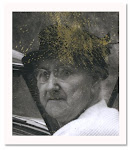I wouldn't have had a business the past forty plus years.
For each of us our first introduction to type was probably books or newspapers. Someone read to us when we were young and we longed to be able to read ourselves. Once you learned to read you realized that type could lead you on endless journeys, though you most likely weren't actually thinking about type itself.
When I was in art college studying design we went on a field trip to a local large typesetter. I watched a man sitting at a
Linotype machine setting type. That was the one and only time I ever saw someone use hot metal. A lot of the hot metal was eventually destroyed, sold off as scrap metal.
By the time I got out of college type was already starting to be set more and more digitally, but still required a knowledgeable typesetter to do the work. I spent my first year out of college working for various companies doing paste-up of typesetting. It was boring and meticulous work. I eventually got a job at a large publisher where again I was doing mostly paste-up for months before I was finally given my first book to design. From then on I was often the one telling the typesetter what to do. I would write out detailed specifications, creating the architecture for the books. I was very good at this. A good compositor could typeset a whole book just by reading my specifications, no visual layouts needed.
And then, what can I say, the home computer came along, and then Adobe postscript, and….
All the typesetters I knew are out of business. Some had invested tens of thousands of dollars to try to keep abreast of what was happening, to no avail. First it was actually the larger compositors that disappeared. They were bought up by people in India who came in and shut down the US operations. Eventually the little houses couldn't compete. You would really be stunned to find out how much typesetting is being done in India today. Good paying jobs around the world were lost; whole industries disappeared. It's the story of free trade and the modern world.
There's another side to type that before only people who worked with type appreciated. The art of creating and using a font was not something we shared with the masses. And then again, the computer changed all that. Suddenly anyone could sit down and do typesetting without any regard to some of the most common rules required for good typesetting. People were able to collect fonts and use them however they wanted. You don't have to look far these days to find appalling typesetting, but there's not much we can do about it.
So for me, this image from
Sepia Saturday, means a lot. It is the very structure from which my profession began, thanks to
Johannes Guttenberg.
Typesetting leads to reading, which leads to imaginations being tested, and a world larger than ourselves.
This photo is from my book
Tattered and Lost: The Quiet Art of Reading.
 _____
_____










